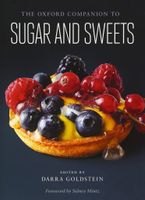Advertisement
Purim and Hanukkah
Published 2015
The sweetness of deliverance is also emphasized during Purim, which falls in late winter or early spring and commemorates the salvation of Jewish communities in the ancient Persian Empire from a plot to annihilate them. See purim. The biblical book of Esther recounts how the vizier Haman’s evil plan was defeated by the Jewish queen and her wise cousin Mordecai. The appointed day of destruction was transformed into one of unbridled celebration: “a day of happiness and feasting, and a holiday, and [a day] of sending portions to one another” (Esther 9.19). The sending of portions to friends (in Hebrew, mishloaḥ manot) is restricted by rabbinic sources to foods that are ready to eat, and the most common items are pastries, candies, and fruits. Sweets are also central to the festive meal, both as symbols of deliverance and as good wishes for the future. Indeed, in many of the Muslim communities amid which Jewish people historically lived, the holiday was known as “the festival of sugar” (in Arabic, eid al-sukar).


